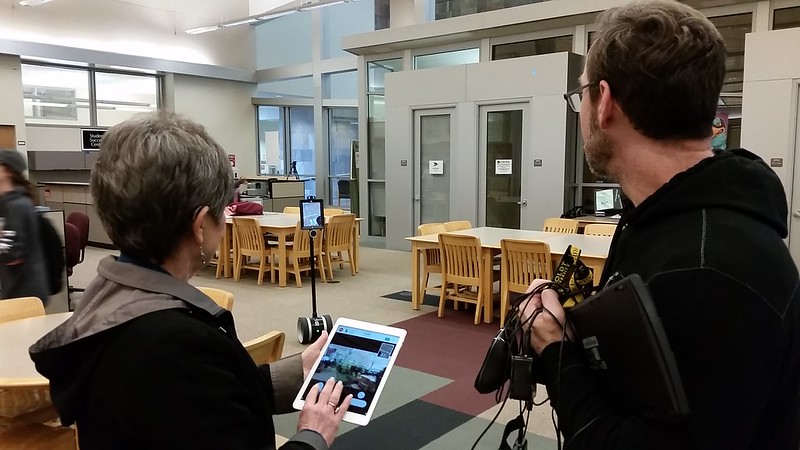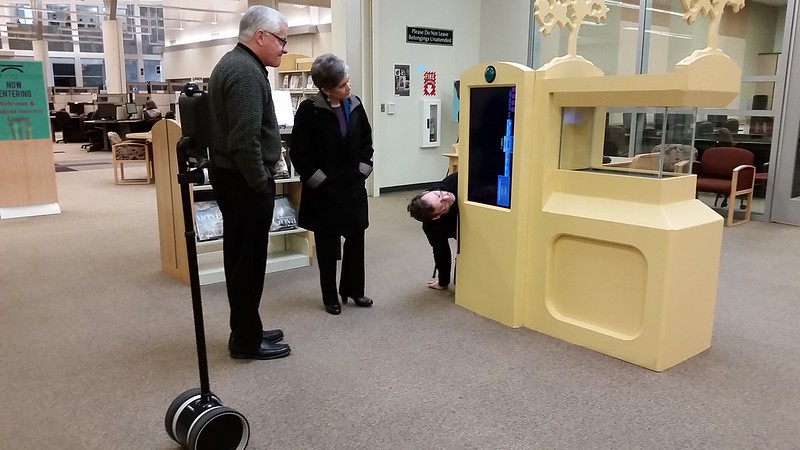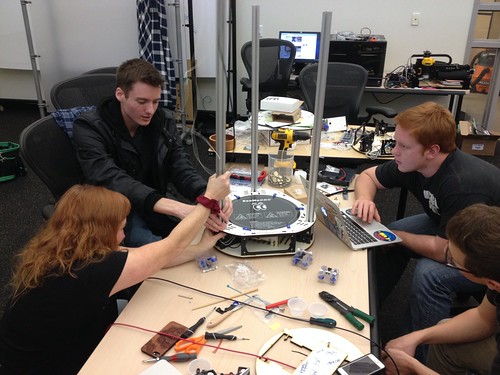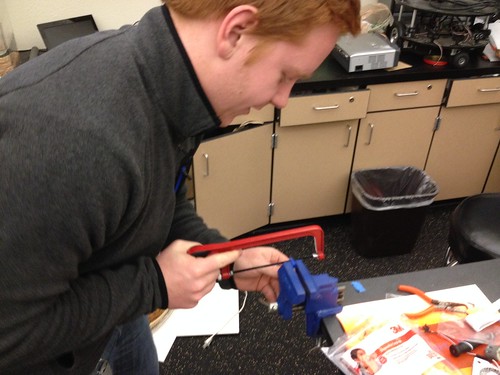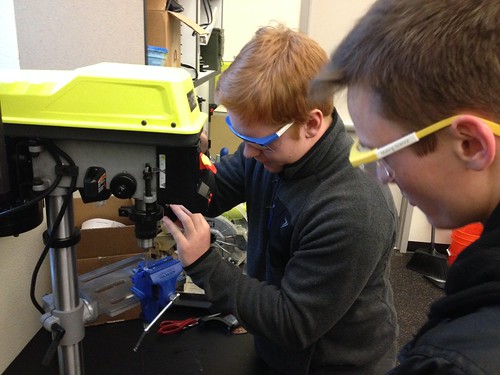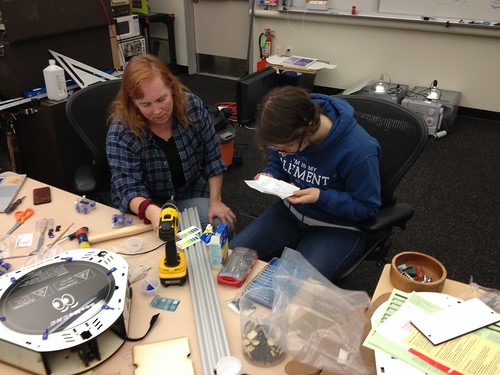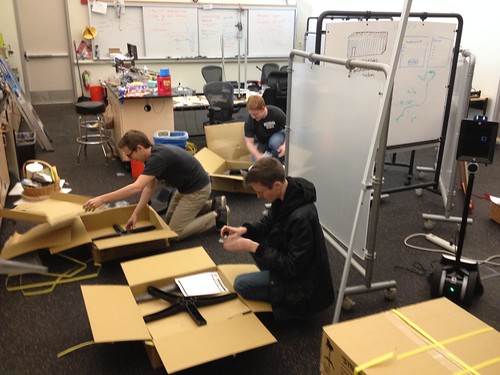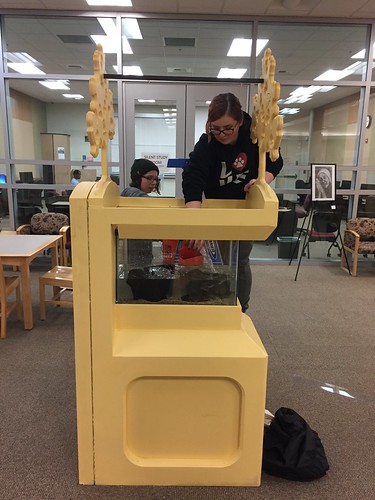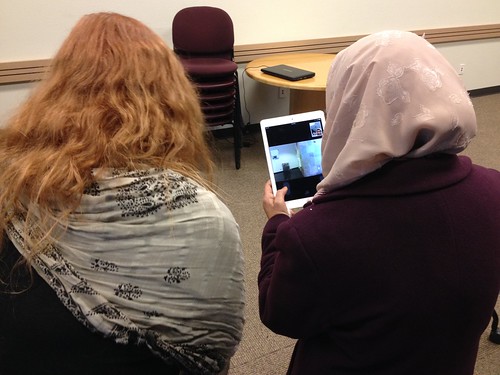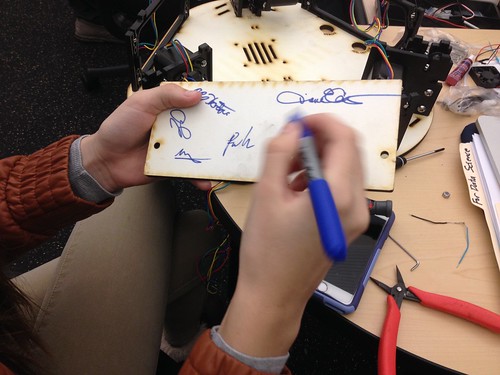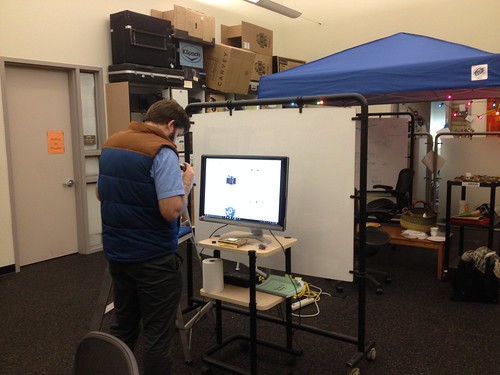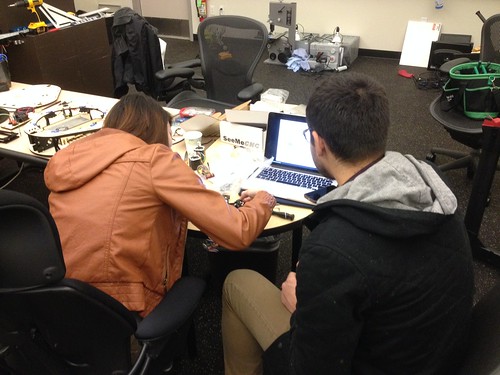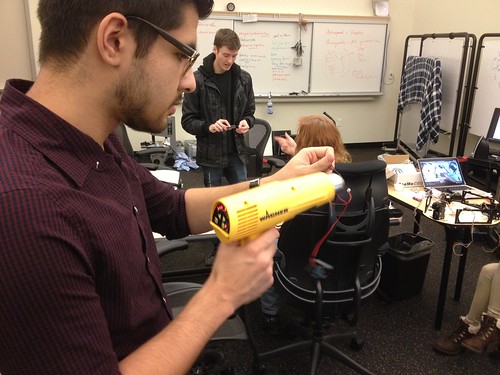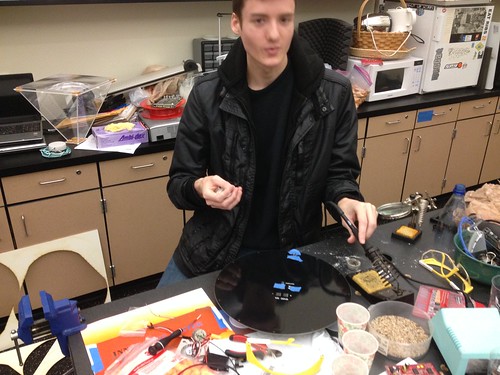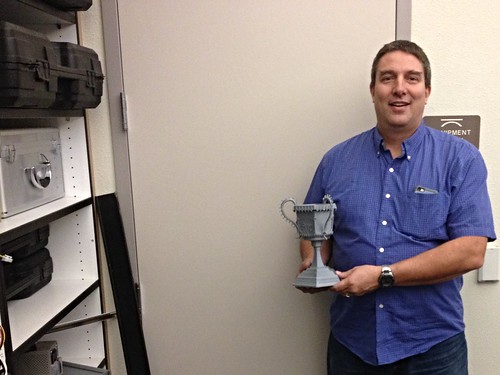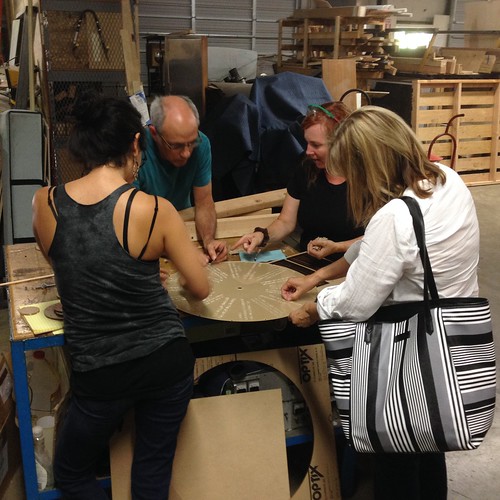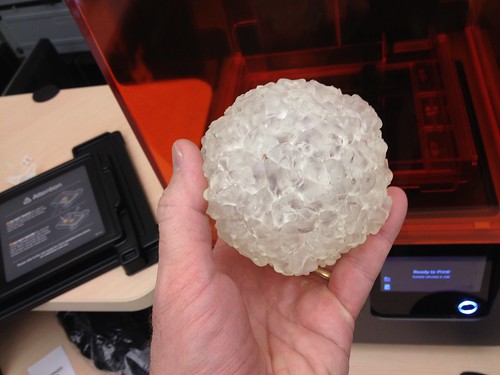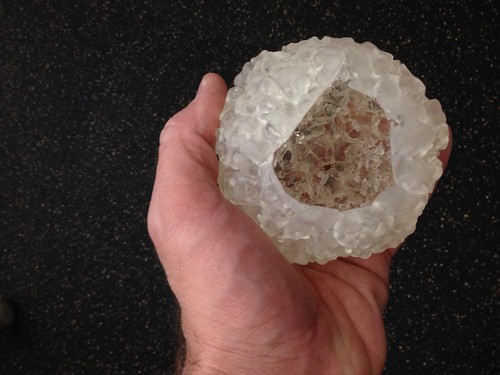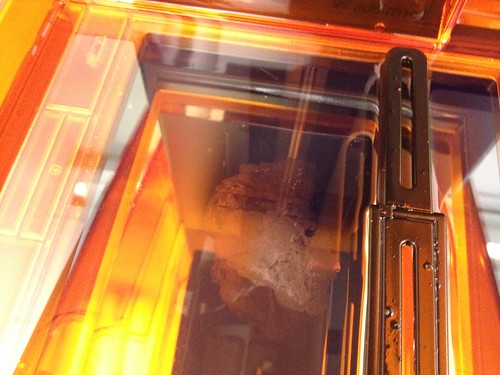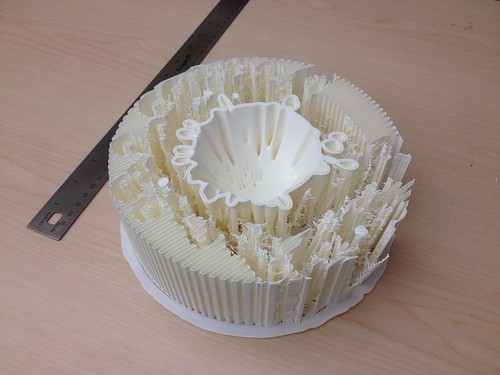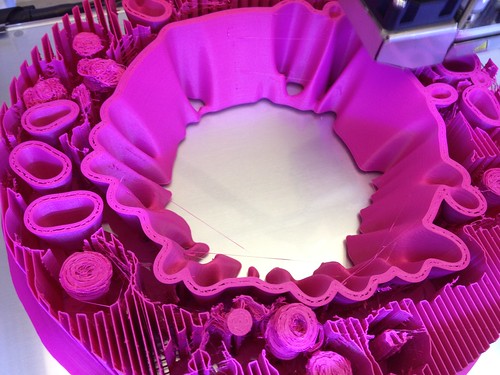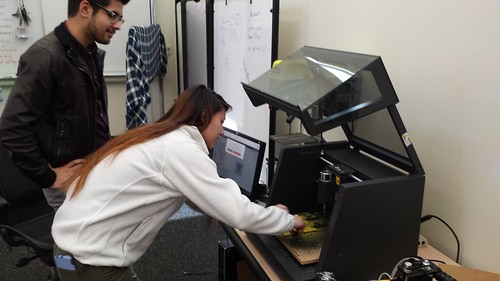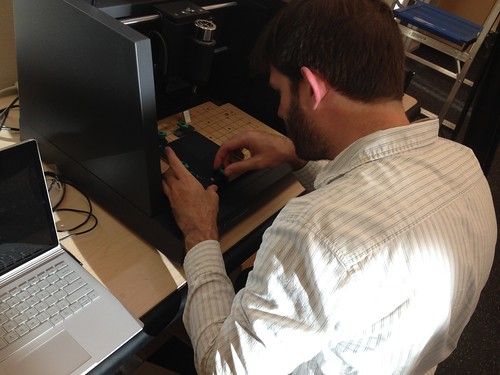Kathleen Kirklin (FLC’s Interim President) took the robot for a spin in the library other day.
I also had the chance to share with Kathleen and Gary Hartely (Dean) progress on the aquaponics project. The plan is to have the screen display some rolling information about the biological and chemical processes in play, interspersed with footage from the live fishcam that will be inside the tank. Pressing the big green arcade button will bring up charts and graphs of the in-tank (temp, pH, electroconductivity) and out-of-tank (temp, humidity, and perhaps one or two others) sensor data.
Lots to do, but within the next couple of weeks there should be some serious development work on all parts of the project…
Photos courtesy of Tony Humphreys.

